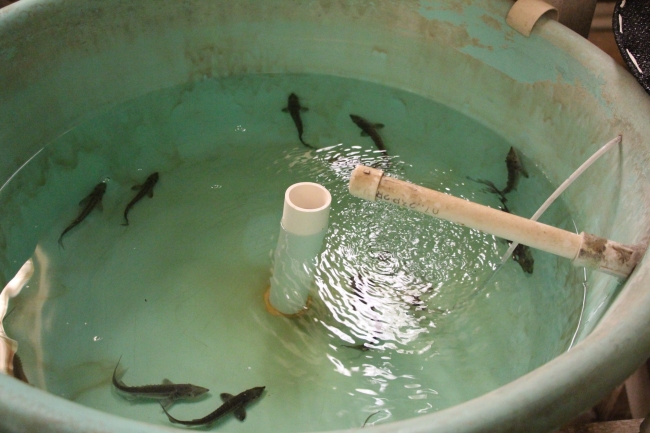This week marks “Research Week” on our blog and we will be highlighting marine debris research projects throughout the week! Research is an important part of addressing marine debris, as we can only effectively address it by understanding the problem the best we can.
By: Chelsea M. Rochman, Guest Blogger and Assistant Professor in the Dept. of Ecology and Evolutionary Biology at the University of Toronto
When I go to the beach, anywhere in the world, I can kneel down and find small bits of plastic litter in the sand—these bits are called “microplastics.” Microplastic has become a common pollutant. It can be found globally, from the equator to the poles, in the ocean, lakes, and rivers. Microplastics are also eaten by and can be found inside nearly 700 species of animals, which likely mistake them for food.
If you take a closer look at this litter, you will notice that it is diverse— a handful of microplastics looks like party confetti, with several colors and shapes. This is because there are many types of microplastics that enter the environment. You can likely see some of the various types from looking at the plastic products in your home. Microplastics generally come from larger plastic items (like water bottles and other household items) that have been degraded into several pieces via the sunlight, wind, and waves. If you look at your plastic items, you’ll notice a recycle code which indicates the plastic type; because there are several plastic types, there are several types of microplastics in the ocean. Thus, animals in the ocean, lakes, and rivers eat a diverse mixture of this material.
Ingesting this plastic debris can be harmful to animals. But, because all plastics are not the same, we were curious how different types of microplastics may impact animals differently. To help answer this question, we designed an experiment in our laboratory that fed different types of common microplastics to prey and predators in a freshwater food chain. We chose to experiment with plastics that belong to recycle codes 1 (polyethylene terephthalate, or “PETE,” used in polyester clothing and water bottles), 4 (polyethylene, used in plastic bags), 3 (polyvinyl chloride, or “PVC,” used in plastic pipes and bank cards), and 6 (polystyrene, used in food take-out containers and disposable cutlery). Because plastics in nature also accumulate chemicals from the environment, we spiked some of these plastics with the organic pollutant, polychlorinated biphenyls (PCBs). We fed environmentally-relevant concentrations of these plastics, both with and without PCBs, to freshwater clams (prey) for 28 days. To measure how the exposure of contaminated prey may impact a predator, we then fed some of the clams to white sturgeon (predator), which are fish that naturally eat clams.

We tested for several effects in clams and sturgeon exposed to each type of microplastic. We then compared these measurements to control treatments (clams and fish that were not exposed to any microplastics or PCBs). We compared changes in protein levels related to the metabolism of toxic compounds and reproduction, abnormalities in cells and tissues, changes in feeding behavior, condition factor (determined using standard weight versus length measurements, often used to measure health), and survival.
We found that the impacts to animals varied by plastic type— using several different plastics that were all the same shape and size, and we found greater overall effects from some plastic types and no effects from others. Just like chemical pollutants, our results suggest that not all microplastics should be lumped into one generalized contaminant group. Instead of only thinking about concentrations of microplastics that may be hazardous, we might also consider different sources and types of microplastics that may be hazardous. This may help ease some of the pressure on both resource managers and industry groups.
For more information on this project, check out the Marine Debris Clearinghouse and the project profile on the NOAA Marine Debris Program website, where more specific results will be available soon.



So given what you found here regarding marine life, what about it's affect on humans? Would the results translate relatively the same, potentially? I watched a 60 minutes piece the other day about how bad the ocean is contaminated and then I see this article below about microplastics contaminating our drinking water, and I'm getting a little scared about what my kids may be getting exposed to now, or in the near future.
https://www.bigberkeywaterfilters.com/blog/microplastics/the-invisible-plague-microplastics-now-contaminate-drinking-water/
Thanks for listening - Pat